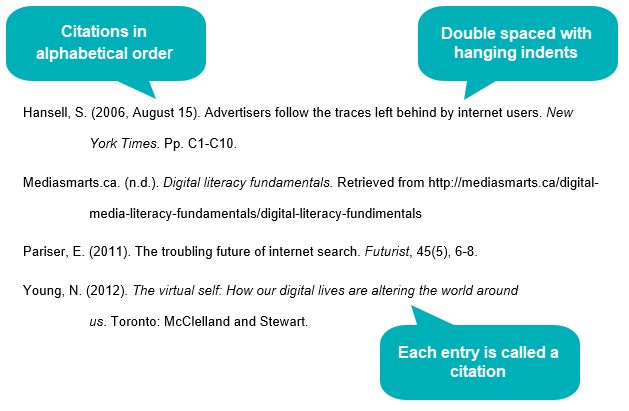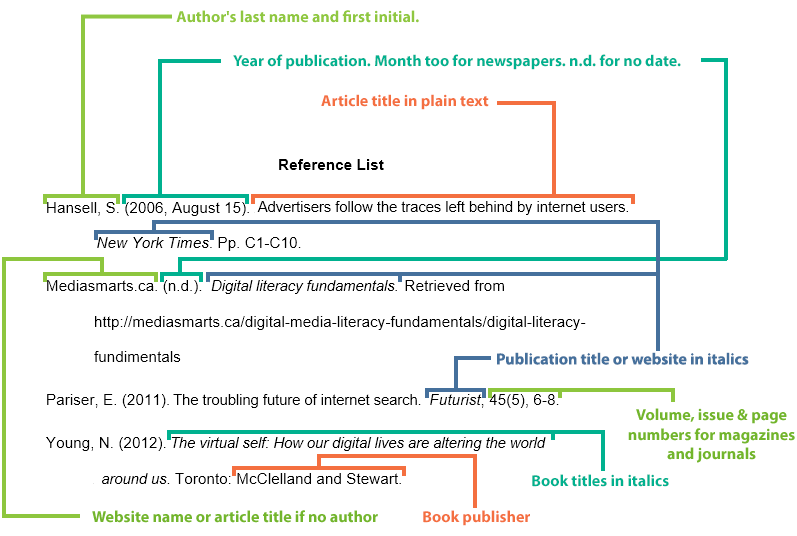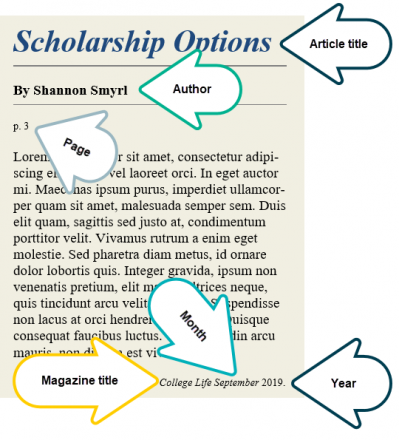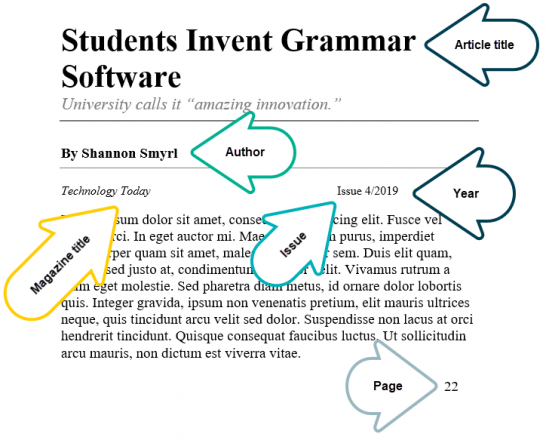Each time we work with research material for an academic project, we need to create a reference list–a list of all the research material we cited (or referred to) in our project. A simple idea, right? Except this list must be organized and formatted correctly, according to the rules in the style guide.
In this workout, you will consider the features and purpose of a reference list and practice how to format the citations for each source.
Remember, we are working with the APA style guide. Make sure you know which style guide rules you should follow for any specific assignment.
What is a Reference List?
Here’s a sample of a reference list for a paper on the topic of internet privacy.
Each citation is a source that has been mentioned, quoted or paraphrased in the body of the essay. Each citation is written according to the APA conventions and provides all the information we need to find the source, including author, title, publication and date.
Take note of the spacing and organization of the information.

Have another look carefully at the four citations on the Reference List. Each one is a little bit different because each one is a different type of publication.
Identifying Citations (Practice)
Why do we need a Reference List?
We need a reference list for two reasons. First, we must acknowledge the work of other people. When we draw on ideas from other sources we must give credit to those sources, making sure our readers understand where the information has come from.
Second, we must provide a way for our readers to go back to our sources and check them out for themselves. The reference list works as a kind of road map for finding our sources.
If we cite (or refer) to another person’s work in our writing, we must make a citation for that source in the reference list, providing enough information for our readers to go and find the source for themselves.
How do I format the Citations?
Formatting citations can be tricky work that involves knowing what pieces of information must be included in the citation and how to punctuate.
Students are often relieved to hear that software or online guides provide models for creating different citations and some will even generate those citations for you!
But be careful. These models and citation generators make mistakes. So, you do need to be familiar enough with the conventions to make sure you include the required information and can confirm the accuracy of the formatting.
Let’s review the basic building blocks of a citation. All citations will include information on author, title, publication, and date. How this information is put together in a single citation depends on the type of source you are working with, such as website, article or book.

Build a Citation (Practice)
To build a proper citation for a reference list, we need to know what type of source we are working with and what information we need to collect.
Let’s practice this now. These are samples only for teaching purposes.
-
- For the first practice exercise, let’s use a citation for Pariser with the model APA citation below for reference:
Smyrl, S. (2019). Scholarship Options. College Life, September, 3.
Author. (Year). Article title. Journal Title, Issue(Volume), page numbers.
In the area below, click on each piece of information you need to build this citation.
- This time, build the citation without a model. Start by thinking about what kind of publication this sample is, and then decide which information from the sample that you will need.
Click on each piece of information you will need for the APA citation.
- For the first practice exercise, let’s use a citation for Pariser with the model APA citation below for reference:

